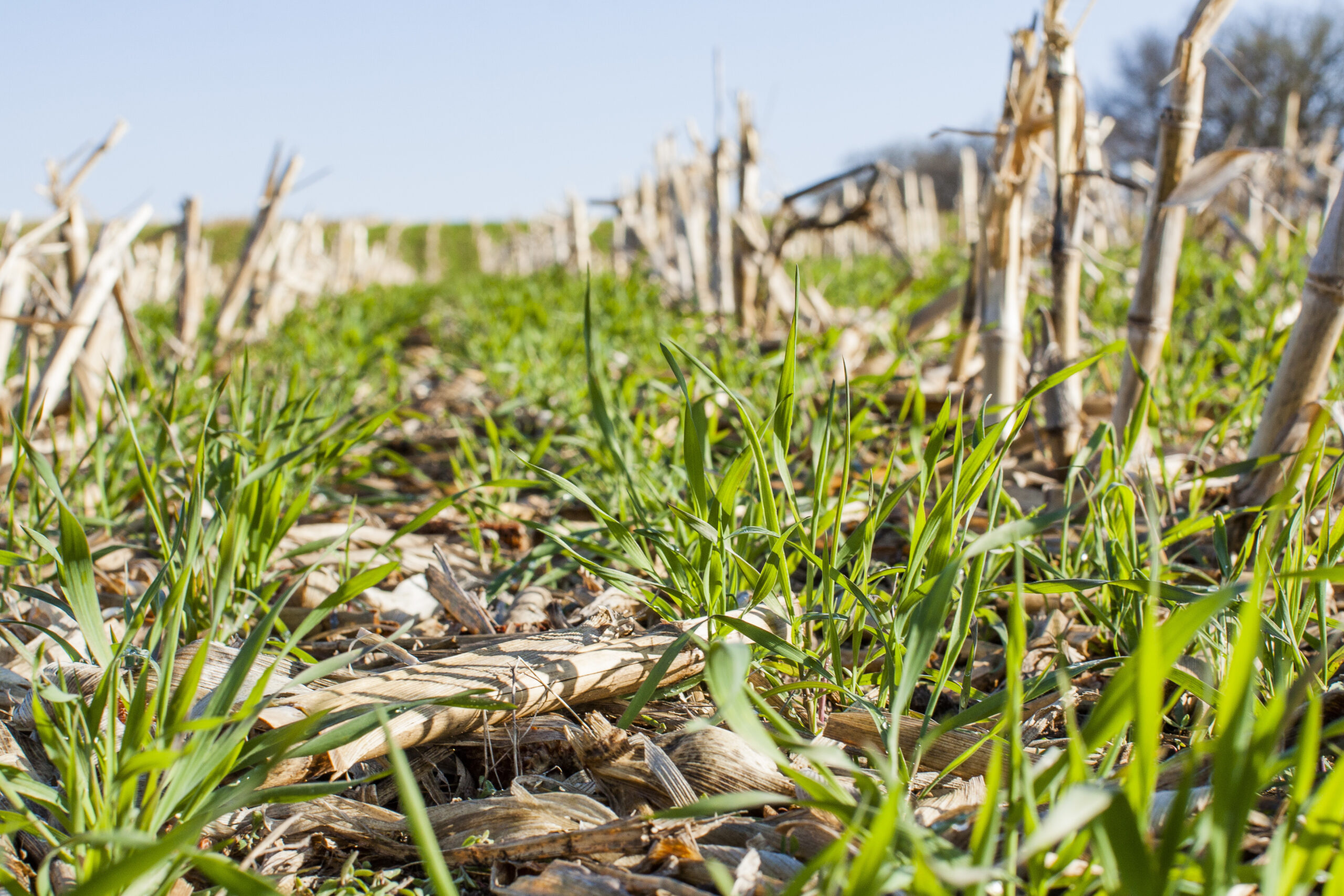
As growers, we take a lot of pride in taking a seed, placing it into optimal soil and letting nature do the rest. Getting the most out of the land seems to be what we do best—which is why planting cover crops, if you raise livestock, may seem like the next natural step in optimal crop production.
Besides providing essential benefits for sustaining food production and regenerating soil, cover crops also offer a way to stretch your grazing window and save money on feed in return.
Missouri has nearly 2 million grazing animals and 11 million acres of row crops, which makes it primed to benefit from cover crop grazing. This practice boosts soil health through manure, hoof action and root responses, leading to healthier soil and crops.
Livestock producers can view cover crops as an underutilized source of cheap forage. Studies show that grazing on cover crops can yield significant daily weight gains in cattle. Cover crops also offer forage when perennial options are scarce, leading to substantial savings on stored forage.
Cool-season cover crops like forage turnips, cereal rye, triticale, winter wheat and annual ryegrass can extend the grazing season into late fall and early spring, providing forage when other sources are limited. Here are a few of our top picks to get started with in cover crops.
Key Cover Crop Species:
Crimson Clover – A winter annual legume, crimson clover establishes fast in the fall and has the potential to produce a fair amount of nitrogen. Crimson clover combines well with other cover crops, and it is reasonably easy to control in the spring. Plus, it’s beautiful when blooming and a boost to pollinators in spring.
Hairy Vetch – This variety is also a winter annual legume, but with a much different growth pattern than clover. Hairy vetch generally overwinters well and by late April starts to grow with great vigor. If grown with another cover crop such as triticale or cereal rye, it will climb those plants and produce a vegetative mat to help suppress spring weeds. Hairy vetch is a strong nitrogen-fixing cover crop.
Cereal Rye – Cereal rye is considered the queen of cover crops and is the No. 1 cover crop used in the United States. Cereal rye gained its popularity through being quite cold-hardy and its ability to be planted later in fall than any other cover crop. Plus, it provides excellent erosion control and incredible growth in spring.
Triticale – A cross between wheat and cereal rye, triticale has some of the hardiness of rye, but the shorter stature of wheat. Considered a good cover for erosion control and for grazing, it works well in combination with other cover crops, particularly legumes.
Oats – Normally spring-planted for grain, oats have the advantage of strong fall growth as a cover crop. Many first-time users of cover crops appreciate that oats will winterkill and require no special management in spring.
Forage Turnips – Like radishes, forage turnips are a member of the Brassica family that does best if planted in early fall. Turnips are superior for grazing. Both the leafy top-growth and the tuber are good forage for grazing livestock. Turnip top-growth typically dies by late December. Turnips are often mixed with another forage species, such as cereal grass.
Annual Ryegrass – Annual ryegrass is fast-growing and easier to establish by broadcast seeding than other grass cover crops. Ryegrass is conducive to interseeding applications in corn or soybean as it is relatively shade-tolerant. Annual ryegrass makes a good forage and, as a cover crop, is known for rooting deeply in the soil and providing good erosion control.
These are just a few cover crop options to extend your grazing period this coming winter season. If you are interested in learning about these options and more to start your cover crop plan, give our expert team at Missouri Southern Seed a call today and we will help you choose the best option for your operation.
